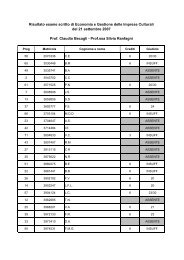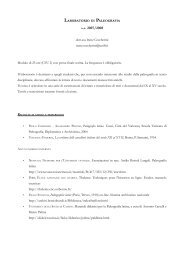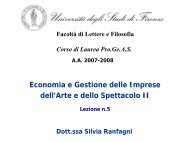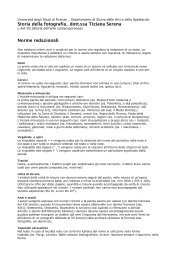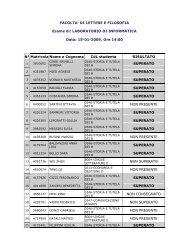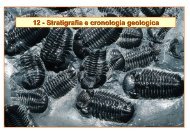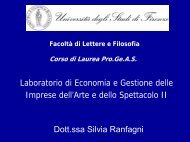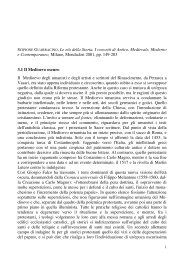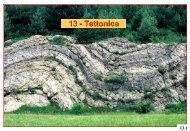Beyond Pragmatics. Morphosyntactic Development in Autism.pdf
Beyond Pragmatics. Morphosyntactic Development in Autism.pdf
Beyond Pragmatics. Morphosyntactic Development in Autism.pdf
You also want an ePaper? Increase the reach of your titles
YUMPU automatically turns print PDFs into web optimized ePapers that Google loves.
J <strong>Autism</strong> Dev Disord<br />
1981). While the function of these echolalic utterances is<br />
not well understood, it might serve several purposes,<br />
communicative and otherwise. For example, children<br />
might use echo<strong>in</strong>g <strong>in</strong> conversation when unsure of their<br />
response; as a familiar verbal ritual; or as a way of<br />
hold<strong>in</strong>g <strong>in</strong>formation <strong>in</strong> memory.<br />
The use of jargon, or nonsense words, has frequently<br />
been reported <strong>in</strong> autism. Children with autism are<br />
more likely to come up with idiosyncratic labels, to<br />
<strong>in</strong>vent nonsense terms with consistent mean<strong>in</strong>gs, and to<br />
l<strong>in</strong>k phrases with atypical mean<strong>in</strong>gs (Lord & Paul,<br />
1997). The production of jargon, like that of echolalia,<br />
likely serves several functions. For example, jargon<br />
could signal the presence of poor referential abilities; it<br />
might signal a difficulty <strong>in</strong> updat<strong>in</strong>g representations<br />
(e.g., if a child <strong>in</strong>terprets a phrase <strong>in</strong>correctly, he may<br />
have difficulty encod<strong>in</strong>g the more correct <strong>in</strong>terpretation);<br />
or, as <strong>in</strong> echo<strong>in</strong>g, it could serve as a communicative<br />
‘‘bridge’’ when a child is unsure of how to<br />
respond.<br />
In addition to jargon and echolalia, verbal <strong>in</strong>dividuals<br />
with autism spectrum disorders frequently have a<br />
unique speech style, marked by suprasegmental speech<br />
qualities such as <strong>in</strong>appropriately soft, or, more frequently,<br />
loud, speech volume; flat or s<strong>in</strong>gsong <strong>in</strong>tonation;<br />
hoarseness; hyper-nasality; and unusually fast or<br />
slow speech rates (Shriberg et al., 2001). Speech is also<br />
marked by overly formal or precise words, neologisms,<br />
and odd phras<strong>in</strong>gs (Rutter, Mawhood, & Howl<strong>in</strong>,<br />
1992).<br />
Pragmatic language use—that is, employ<strong>in</strong>g language<br />
as a social system to communicate—is a doma<strong>in</strong><br />
of significant impairment <strong>in</strong> ASD. High-level discourse<br />
aspects of language <strong>in</strong> autism <strong>in</strong>clude difficulty with<br />
turn-tak<strong>in</strong>g behaviors; <strong>in</strong>terpret<strong>in</strong>g statements <strong>in</strong> an<br />
overly literal fashion (e.g., respond<strong>in</strong>g to the literal<br />
mean<strong>in</strong>g of metaphors or not catch<strong>in</strong>g the underly<strong>in</strong>g<br />
mean<strong>in</strong>g of irony or sarcasm); respond<strong>in</strong>g <strong>in</strong> conversation<br />
without regard for the Gricean maxims of<br />
quality, quantity, relevance, and manner (Grice, 1975);<br />
and difficulty <strong>in</strong> structur<strong>in</strong>g narratives (Capps, Losh, &<br />
Thurber, 2000; Diehl et al., 2006). Individuals with<br />
autism of all ages are likely to use words with an<br />
<strong>in</strong>appropriate level of conversational formality (i.e.,<br />
register), lead<strong>in</strong>g to somewhat pedantic, precise speech<br />
(Lord & Pickles, 1996).<br />
Learn<strong>in</strong>g the grammatical structure of a language<br />
<strong>in</strong>volves learn<strong>in</strong>g to comb<strong>in</strong>e words <strong>in</strong>to phrases;<br />
learn<strong>in</strong>g grammatical categories (e.g., noun, verb,<br />
object, agent, Bloom, Rocissano, & Hood, 1980); and<br />
learn<strong>in</strong>g to use the grammatical elements of language<br />
(e.g., morphemes such as –<strong>in</strong>g, –ed, or cat, which are<br />
words or parts of words that carry grammatical<br />
mean<strong>in</strong>g; Brown, 1973; de Villiers & de Villiers, 1973).<br />
While an extensive literature exam<strong>in</strong>es the relationship<br />
between social impairments <strong>in</strong> autism and impairments<br />
<strong>in</strong> pragmatic and discourse aspects of language<br />
(Baltaxe & D’Angiola, 1997; Ozonoff & Miller, 1996;<br />
Shriberg et al., 2001; Tager-Flusberg & Anderson,<br />
1991), there has not been a similarly <strong>in</strong>-depth exploration<br />
of syntactic development <strong>in</strong> autism, nor how it<br />
may relate to underly<strong>in</strong>g cognitive impairments.<br />
Several studies have exam<strong>in</strong>ed the acquisition of<br />
grammatical morphemes <strong>in</strong> children with autism and<br />
found no differences between children with autism and<br />
typical control children matched on nonverbal mental<br />
age (Fe<strong>in</strong> & Waterhouse, 1979, October; Howl<strong>in</strong>,<br />
1984a, 1984b). Similarly, one longitud<strong>in</strong>al study found<br />
few differences between children with autism and<br />
mental age-matched Down syndrome and normal<br />
controls <strong>in</strong> grammatical complexity <strong>in</strong> productive language<br />
(Tager-Flusberg et al., 1990) us<strong>in</strong>g the Index of<br />
Productive Syntax (Scarborough, 1990). In contrast,<br />
however, Bartolucci and colleagues found that children<br />
with autism were less likely than mentally retarded and<br />
normal control participants to produce grammatical<br />
morphemes, especially verb tense and articles<br />
(Bartolucci, 1982; Bartolucci & Albers, 1974;<br />
Bartolucci, Pierce, & Stre<strong>in</strong>er, 1980). Dalgleish (1975)<br />
has suggested that syntactic deficits <strong>in</strong> autism are<br />
related to deficits <strong>in</strong> the ability to sequence stimuli, or<br />
to learn rules for order<strong>in</strong>g stimuli. One study found<br />
that children with autism differed from verbal mental<br />
age-matched children with typical development and<br />
Down syndrome <strong>in</strong> their comprehension of transitive<br />
(the man put the glass on the table), but not <strong>in</strong>transitive<br />
(the man arrived), sentences (Prior & Hall, 1979); the<br />
latter typically emerge later <strong>in</strong> development. Several<br />
recent publications suggest the presence of more substantive<br />
syntactic impairments <strong>in</strong> autism (Condouris,<br />
Meyer, & Tager-Flusberg, 2003; Rap<strong>in</strong> & Dunn, 2003),<br />
or <strong>in</strong> a subgroup of <strong>in</strong>dividuals with autism (Kjelgaard<br />
& Tager-Flusberg, 2001). Thus, while many researchers<br />
have concluded that syntactic development, contrasted<br />
with pragmatics or discourse aspects of language<br />
acquisition <strong>in</strong> autism, is concomitant with general<br />
developmental progress, the f<strong>in</strong>d<strong>in</strong>gs to date are<br />
equivocal and could be consistent with a specific<br />
deficit.<br />
One consideration with respect to the diversity of<br />
f<strong>in</strong>d<strong>in</strong>gs to date is that deficits <strong>in</strong> autism may be masked<br />
by match<strong>in</strong>g procedures (Lord & Paul, 1997). Relatively<br />
heterogeneous groups of children with autism<br />
are often compared with more homogenous groups of<br />
children with mental retardation. Because nonverbal<br />
ability is often a strength <strong>in</strong> autism, and s<strong>in</strong>ce groups<br />
123


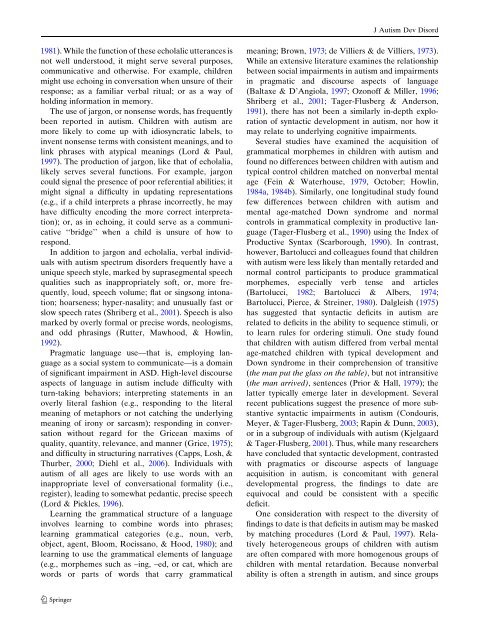
![PATROLOGIA GRECA E LATINA [Patrologiae cursus completus]. All ...](https://img.yumpu.com/50711133/1/184x260/patrologia-greca-e-latina-patrologiae-cursus-completus-all-.jpg?quality=85)
